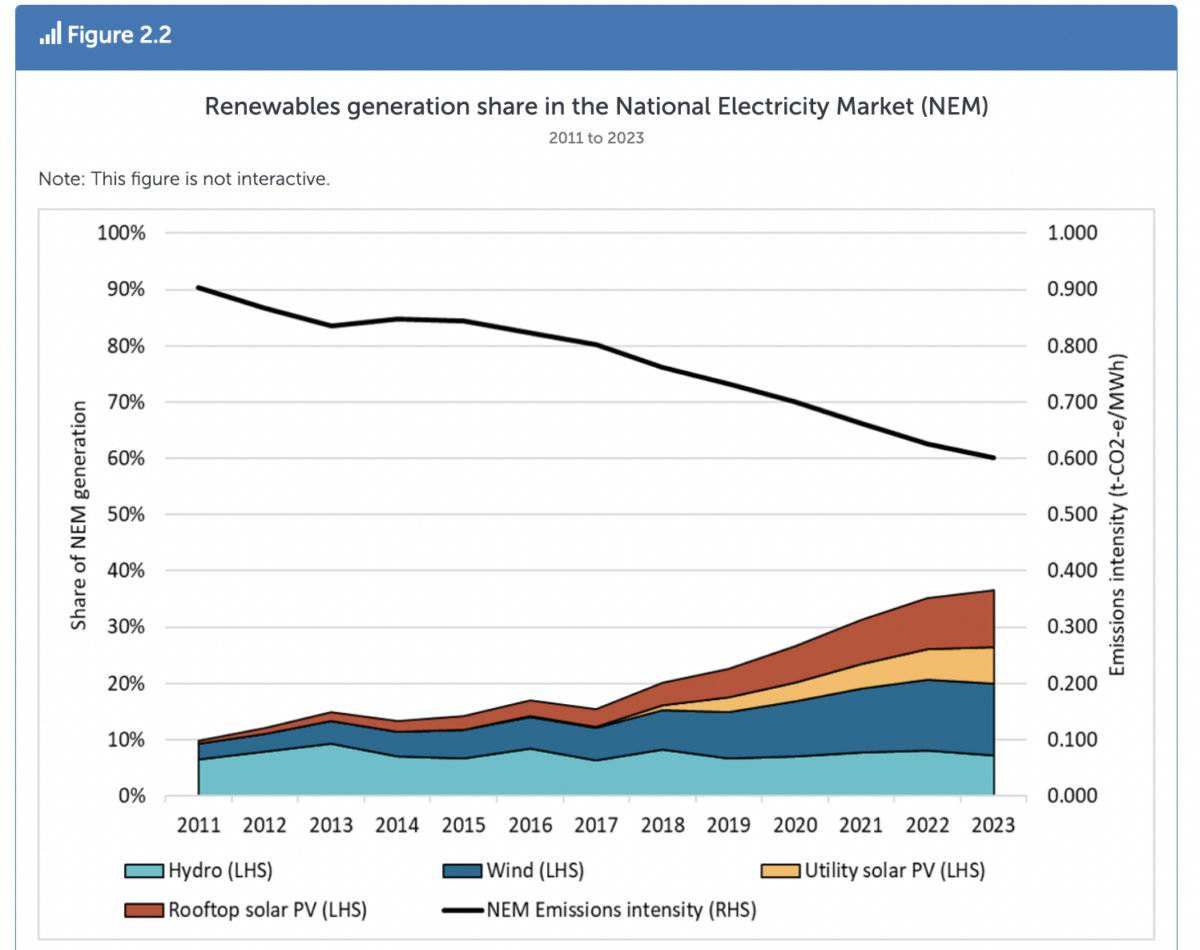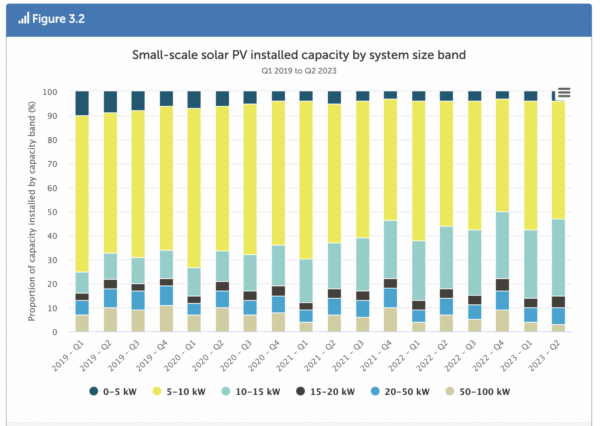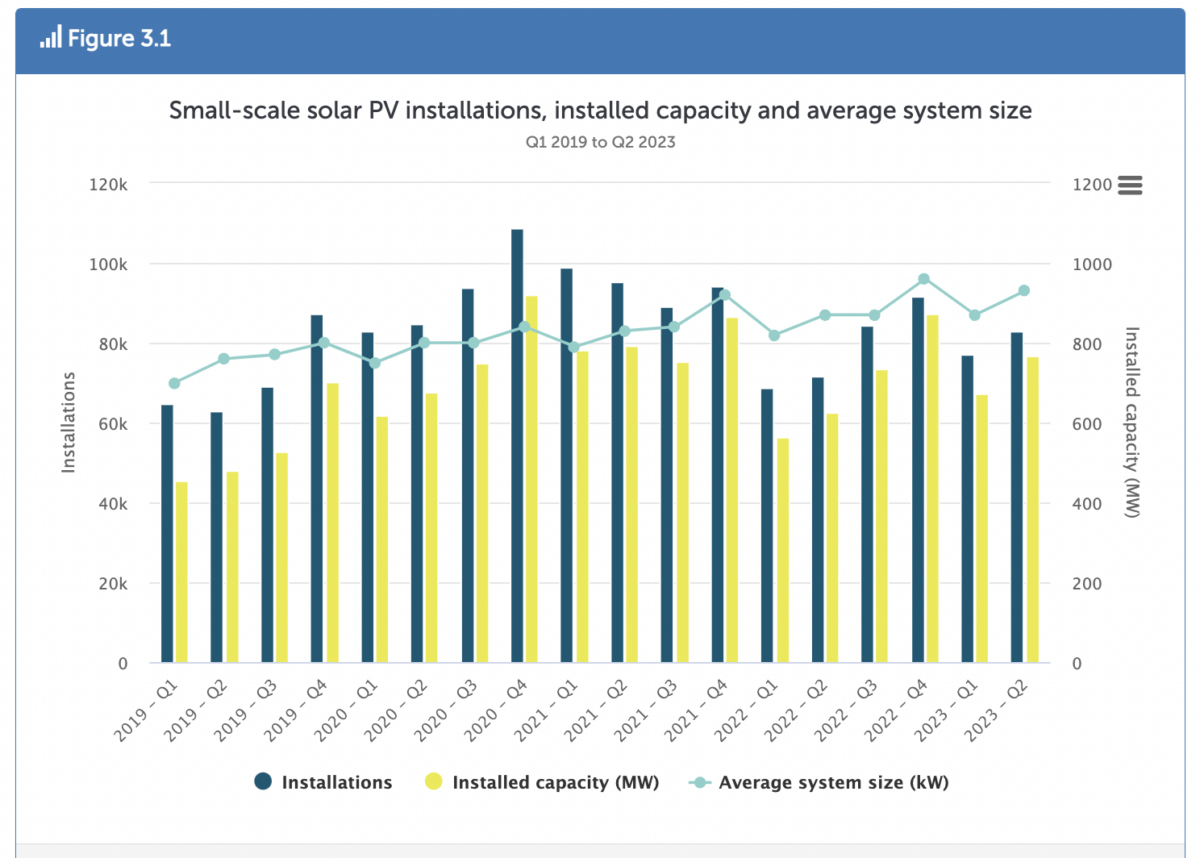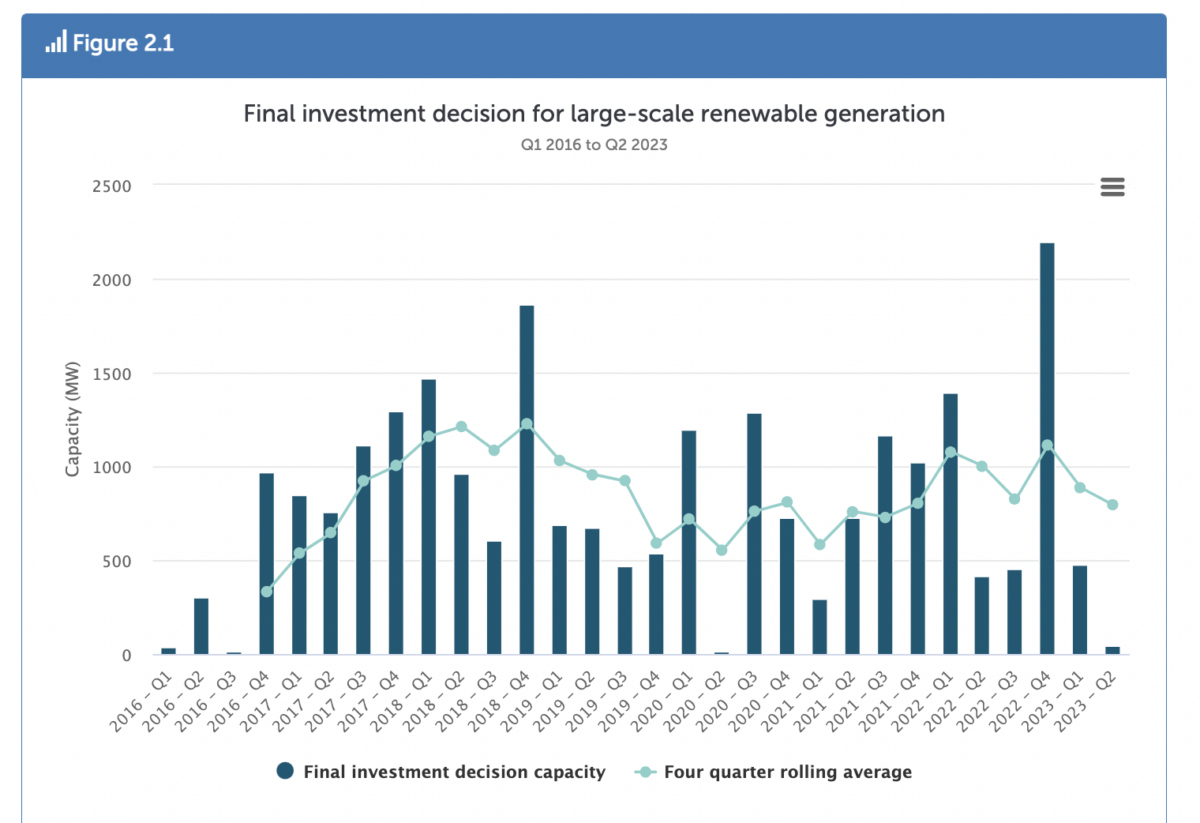Australia’s Clean Energy Regulator has released its second Quarterly Carbon Market Report, rounding out the first half of 2023. While Australia’s small-scale market continues to boom, including the installations of rooftop solar and more recently heat pumps, utility-scale projects are stagnating – caught in a web of rising costs, global competition, regulatory and social license hurdles.
Heat pumps heat up
An estimated 60,000 new air source heat pumps have been installed so far this year – up 70% compared to the first half of 2022, according to the report.
Overall, more than 1.1 million small-scale technology certificates (STCs) were created from air source heat pump installations in the first half of the year, accounting for 8% of the total STC creations in that period.
Modelling from the Australian Alliance for Energy Productivity, commissioned by the Australian Renewable Energy Agency (ARENA), in 2022 found emissions abatement from heat pumps had previously been “grossly underestimated” in Australia. Its research found heat pumps, especially when deployed in the industrial segment, could reduce ‘hard to abate’ emissions by 15 million tonnes per annum by 2050.
Large-scale segment stagnent
The Clean Energy Regulator’s CEO and Chair, David Parker, described the first half of the year for new large-scale renewable energy investment commitments as “quiet.”
“We’ve downgraded our expectations and now expect 2023 investment may not reach 3 GW,” he said.
While the Regulator had forecast 3.5 GW of new renewable projects would reach FID in 2023, just 0.5 GW managed to do so before July. The second half of the calendar year is expected to be larger than the first half, however, with the Regulator saying industry engagement suggests a figure of around 2.5 GW.

Image: Clean Energy Regulator/ Data sourced from OpenNEM
“Wind and solar remain the cheapest options for new energy supply. Unfortunately, rising costs for components, engineering and construction combined with strong international demand for these products and services are slowing progress. Finding ways to streamline grid connection and fast-tracking new transmission will also be critical for success,” the Regulator said in its release. Pv magazine Australia covered these compounding issues in depth earlier this year.
“Discussions with some project developers yet to achieve FID indicate they continue to face challenges with social license and permitting,” the report also notes.
Power purchasing agreements, or PPAs, which are fundamental for large-scale projects as they secure offtake and thus guarantee income, are also increasing in prices and decreasing in duration – which is also impacting the number of projects reaching FID, the Regulator flagged.
“Increased cost and risks [for large-scale renewable projects] are flowing through to the PPAs prices,” the report says. “A higher price is needed on a per megawatt hour basis to get projects to FID. These higher prices may be leading to less demand for PPAs from electricity retailers and corporates.”
“There is an emerging trend towards shorter-term PPAs,” the Regulator added.
The Regulator has also joined the choir of voices noting that a “large step up” is required to reach Australia’s target of 82% renewable energy generation by 2030.
The Regulator’s data solidifies the dismal large-scale trend pv magazine reported earlier this month, as flagged by solar and storage analyst Sunwiz.

Image: Clean Energy Regulator
Rooftop solar on track to beat 2021 record
Australia’s long-time bright spot, rooftop solar installations in the first half of the year almost totalled 160,000 systems – meaning 2023 is trending towards beating Australia’s previous 3.2 GW record.
In the first half of 2023, 1.4 GW rooftop solar PV capacity was installed. “This is 21% more than the first half of 2022. We usually see installed capacity increase over the year (see Figure 3.1). If this typical trend continues, we could beat the 3.2 GW record set in 2021,” the report says.

Additionally, rooftop systems sizes are growing, with the average system reaching a record 9.3 kW.
“The increased capacity saw the share of renewable electricity rise to over 36% of demand in the National Electricity Market. This is expected to grow to 40% by December,” the report says.
Australia’s love-affair with rooftop solar was borne out over the weekend with generation from South Australian rooftops supplying 101% of the state’s electricity demand on Saturday. Energy advisory Global Power Energy noted South Australia’s achievement is “unparalleled for a large regional network both within the Australian National Electricity Market (NEM) and on a global stage,” on Linkedin.
This content is protected by copyright and may not be reused. If you want to cooperate with us and would like to reuse some of our content, please contact: editors@pv-magazine.com.









By submitting this form you agree to pv magazine using your data for the purposes of publishing your comment.
Your personal data will only be disclosed or otherwise transmitted to third parties for the purposes of spam filtering or if this is necessary for technical maintenance of the website. Any other transfer to third parties will not take place unless this is justified on the basis of applicable data protection regulations or if pv magazine is legally obliged to do so.
You may revoke this consent at any time with effect for the future, in which case your personal data will be deleted immediately. Otherwise, your data will be deleted if pv magazine has processed your request or the purpose of data storage is fulfilled.
Further information on data privacy can be found in our Data Protection Policy.